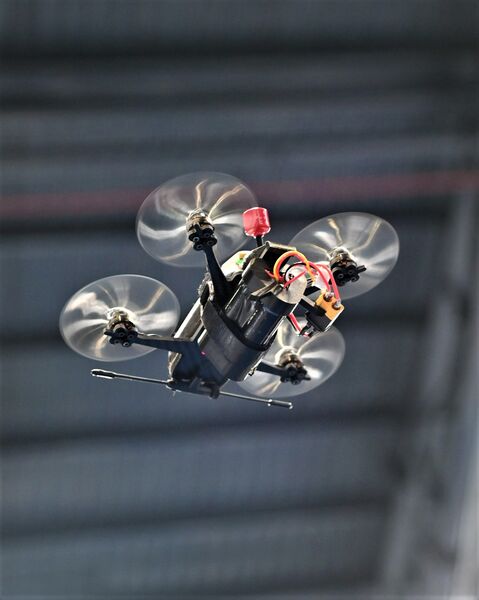
The Doot Mk-I, a nano UAV developed by private-sector firm Indian Defence Reforms (IDR) Research and Development Private Limited, has been trialled by the Indian Armed Forces for situational awareness missions in urban environments. (Janes/Amit Kalra)
The Indian government launched its ‘Drone Rules 2021' in August of that year to promote the development of a domestic unmanned aerial vehicle (UAV) market. The rules are intended to provide a much-needed boost to the Indian UAV industry and reduce reliance on imports.
The Indian military has been using UAVs for more than two decades in intelligence, surveillance, and reconnaissance (ISR) roles on its borders with Pakistan and China. Despite its first use of UAVs during the Kargil War in 1999 – and efforts since to develop and produce ISR platforms – the evolution of UAV capability in India has been slower than some neighbouring countries.
The Nishant, a remotely piloted aircraft (RPA) programme that began in the 1990s, was India's first major step towards the indigenisation of UAVs. Developed by the Defence Research and Development Organisation's (DRDO's) Aeronautical Development Establishment (ADE), the Nishant made its maiden flight in January 1995.
According to Janes All the World's Aircraft: Unmanned, a limited number of Nishant UAVs saw operational trials with the Indian Army during 2004–15, before the last of the four procured aircraft crashed in November 2015. Another important UAV programme has been the ‘Rustom', a family of medium-altitude long-endurance (MALE) UAVs, being developed by the ADE for the three services of the Indian military.
Looking to read the full article?
Gain unlimited access to Janes news and more...







